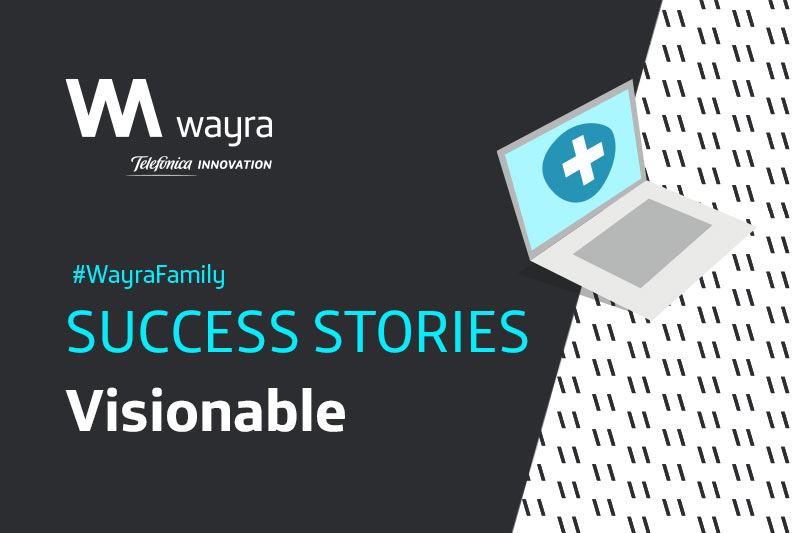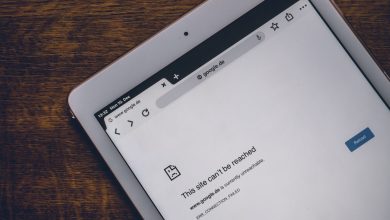Innovating within a company is not an easy task, but it is necessary, and the business development team at Telefónica Open Innovation, takes care of just that. We attempt to bring innovation closer to the company and its clients by finding the perfect match, or as we call it ‘fit’, between their technological needs and the solutions offered by Wayra startups.
In January we shared the story of one of the most global fit cases of 2020, where we also explained how we support startups in their internationalization process. Apart from helping startups grow internationally, we also work with them to find ways in which Telefónica can provide value to their projects, helping them to scale. A great example of this is the “Smart Ambulance”, a project in which Visionable and O2 UK have worked together.
What is Visionable?
Visionable is the first video collaboration platform designed specifically to help medical teams with their advanced clinical needs. It has its own, proprietary software approved by the NHS (National Health Service).
In 2017, two years after its foundation, Visionable was invested by Wayra UK after applying to their ‘General Call London Programme’, a flagship program created to find companies that could be interesting for Telefónica. Finally, in 2019, this startup began its collaboration with O2.
Visionable was selected as one of Open Innovation’s 2020 Tech Bets – a list of companies, within our yearly Hall of Fame, which we believe have a clear potential for growth due to their innovative technology.
Virtualizing healthcare with Visionable
As stated by its founders Alan Lowe and Lord Victor Adebowale, Visionable aims to transform healthcare through its technology, helping to develop the “next generation of virtual hospitals”. Their objective is to quickly address patients’ needs and demands, which continue to grow, especially with the emergence of new diseases such as COVID-19.
Through Visionable’s software an unlimited number of medical experts, from different fields, are able to meet securely online, from any location and through any device. In these virtual meetings, high definition clinical-grade images, such as X-rays or MRI scans, can be exchanged in real time, enabling faster diagnosis and collaborative decision making.
Additionally, clinicians can hold virtual consultations with their patients through this videoconferencing platform, with immediate access to their medical records and high quality imaging tests. This offers a greater adaptation to patients’ availability and helps avoid unnecessary trips to the doctors office or hospitals, something which is especially important during the pandemic.
Today, Visionable is working with more than 100 organizations and over 36 NHS trusts in the UK, as well as with the health insurance company Bupa and the government agency HM Prison & Probation Service. They also have an agreement with Verizon in the United States.
Saving lives with Visionable’s ‘Smart Ambulance’
Undoubtedly, the company’s most innovative case has been the development of the ‘Smart Ambulance’. A project aimed at assisting and helping treat stroke patients quicker and more effectively, and in which Visionable has worked together with O2 UK and other partners.
Around 6 million people pass away each year due to strokes, making it the second leading cause of death and the third leading cause of disability worldwide. During a stroke, hundreds of millions of cells die every minute, so intervention time is really important.
That is why Visionable wanted to transform traditional ambulances into connected vehicles that would help emergency medical technicians contact medical experts at the hospital faster, in order to accelerate the critical treatment of patients, prior to their arrival at the hospital. This way, patients could recover sooner and mortality rates would decrease.
The company gained funding from Innovate UK (UK Government) to deploy connected devices in ambulances with East of England Ambulance Trust. O2 is also providing East of England Ambulance Trust with 4,000 iPads to enable a more connected way of working. This concept was initially tested at a 5G testbed in Millbrook, Bedfordshire, with O2 providing connectivity and Samsung providing the devices.
Telefónica’s 5G Connectivity: a key element for the connected ambulance
For the execution of this project, Visionable – together with the NHS – reached out to O2 in search of a high-speed and low latency connectivity that, coupled with the company’s software, would allow for high-definition images and video conferencing to be transferred faster. This actually presented an innovative use case for Telefónica’s 5G connectivity in the healthcare industry. It’s worth pointing out that other use cases and applications of this new generation of connectivity for telemedicine are already being developed, such as remote surgery or the use of wearable devices to monitor patients’ health.
This success story proves that innovation in traditional sectors is not only possible but also necessary. The digital transformation of the healthcare system will undoubtedly improve our quality of life, not to mention that it represents a 200 billion dollars market.
If you want to know more about the company you can visit their website or contact Open Innovation’s business development team.






